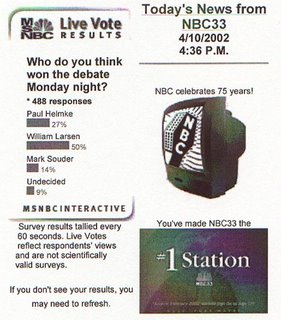Social Security – Who would have guessed?
The Social Security Administration has finally placed on their website information on multiple different “fixes” for Social Security’s solvency over the next 75 years.
They look at seven different areas:
- COLA - Cost of living adjustment
- Taxation of Benefits
- Payroll Tax
- New Enrollies
- New Investment Vehicles for Trust fund
- Change the full retirement age
- Change the Benefit Formula
- Annual Balance (revenues minus expenses)
- Trust Fund Ratio
- It includes all revenues from all cohorts Those who turn 65 after the 75 year solvency period have their contributions consumed by those who receive benefits during the 75 yea period. The solvency period ends in 2084. With a full retirement age now at 67 for those born after 1970, this means any person who is born after 2017 will pay into Social Security, have their contributions used to pay current beneficiaries only to relive the same problem we have today.
- It only includes those liabilities that must be paid within the 75 year period. Those born after 2017 earn credits yearly toward Social Security Benefits, but they do not accrue a liability and is therefore not included in the evaluation. In simple terms those who retire prior 2063 are fully evaluated (though they may not be able to pay benefits). Those who retire between 2063 and 2084 are evaluated partially. For example; for those born in 2016, they represent just one full year of liabilities instead of 21 to 22 years.
What the different scenarios point out vividly is the magnitude of the problem. Even raising the pay roll tax in two increments over a decades does not solve the problem long term. This is referred to the cliff effect. The 75 solvency period is a moving target. If today we look at 75 years into the future, then we are looking out till 2084. In 2010 they are looking at 2085 and in 2011 they are looking at 2086. This means if we decide to do anything, we fall off the cliff the year after the solvency period ends. It is like starting a whole new social security program with a full compliment of beneficiaries and no trust fund.
Is there a way to get a truer idea of the problem, yes? The SSA has done the difficult task of creating the algorithum and collecting the data needed for the calculation. However, they have failed to exclude the revenues from those who are working, but who are too young to receive benefits during the 75 year evaluation period. If they did this, you could calculate the unfunded liability very closely. In addition, you would not have too look out 75 years, but simply 25 years.
They have the data, they simply need to refine the parameters of who is included. They know by SSN applications who was born when. They get yearly information on wages earned subjected to the SS-OASI tax. This is not rocket science, just plain simple high school math.
Why won't they do this? IF they did this, the payroll tax would have to go to over 18.5% from 10.6% today. This is a very signficant hike and would most likely meet more challenge than Healthcare Reform. Therefore, it is better for them (worse for the worker) to take baby steps and bait us into paying a little bit more, cutting benefits, raising retirement age and changing the benefit formula. In this way they lead us to the ulimate outcome where we pay 4 times more for a benefit than it is worth and they (politicians) never have to face the public.
It is the frog who jumps into a pot of cold water that is slowly heating up.
I used the word fix because that is what it is. It is like any addict. Social Security needs a fix and takes what it needs without asking, thinking or realizing the consequences. Can you stop your craving for Social Security? Who can you just say no to Social Security?



0 Comments:
Post a Comment
<< Home